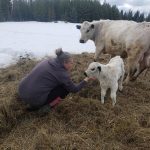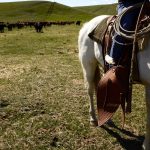
Reconnecting a First Nations community to agriculture
Terry Lerat, ranch manager for Cowessess First Nation, is using his decades of experience in the cattle industry to encourage young people in his community to get involved in agriculture

B.C. ranchers value docility of British White cattle

Canadian Beef Breeds Council to launch genetic data hub
The hub will allow breed association members to track and link genetic data, as well as everything from birth weights to ultrasounds

Alberta ranching family teaches cattle to forage through snow
Roxanne and Kevin Ziola transitioned their operation from a mixed farm to a grass-fed ranch, where winter grazing is a key part of their production

Withstanding extreme cold while winter calving
While many producers prefer spring calving, Matthew Ramsey shifted his calving season to January to avoid Manitoba’s wet April weather

Peace Region Living Lab includes learning cluster
The Living Lab, which spans the Alberta and B.C. border, has the potential to create a community of producers interested in trying new things

Feeding cows for fertility
The right vitamin and mineral package, and high-quality forage, can boost a herd’s conception rate

Video dome showcasing ranching draws children during Agribition

Beware zoonotic diseases in your herd, says university veterinarian




